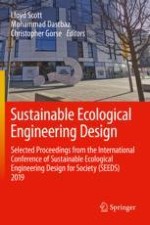Abstract
Nature-based solutions are a popularising concept within current urban regeneration literature, exploring differing themes in the context of optimising public spaces. Focus on the adaptation of public space design, with the community at the forefront, has been documented to a limited degree, with few studies concentrating on possible design strategies.
This literature review revealed that the majority of nature-based design frameworks, since 2017, have suggested the benefits of nature in public spaces to human health and well-being: whether physically or psychologically, and either within the full framework or as part of the framework’s scope. There are however variations in the number and clarity of steps needed to follow each framework, and it is evident that the importance of community driven designs is understated within built environment literature. Many frameworks favoured the use of academic studies as a secondary source for their creation, with few using primary analysis of community acceptance and co-creation.
This paper explores the literature available on nature-based solutions and their design frameworks. It maps out the existing studies, to date, and reports on the initial findings for this progressing PhD research. Public spaces are, in their very definition, a space for the public; despite this, development of these spaces, as well as the literature around the subject, is far more theoretical and professionally inclined, rather than community influenced. With an emphasis on sustainable development, this paper suggests that community views on nature-based public spaces need to be the focal point of design frameworks for public urban spaces, which may then be used as a protocol for the production of optimal and effective nature-based public space regeneration.
